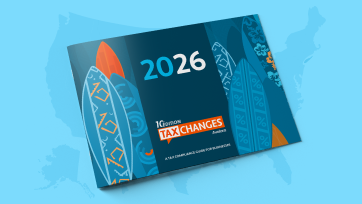
Thoughts on property tax compliance rules, nuances, and valuation
In the complex world of property tax compliance, no two properties or tax jurisdictions are quite the same. That’s why organizations with large property footprints rely on tax professionals who understand the ins and outs of local rules, assessment methods, and valuation best practices.
As a property tax professional, I often get asked: What’s the trick to staying on top of compliance across so many jurisdictions? The short answer: There is no trick — just a deep understanding of property tax rules, sharp attention to detail, and a proactive approach to valuation.
Whether you’re managing a single facility or overseeing assets across dozens of states, understanding the rules and nuances of property tax is essential to staying compliant, avoiding penalties, and identifying opportunities for savings.
In this post, I’ll walk through key concepts, common challenges, and how I approach property tax compliance from the ground up.
Start with understanding the rules
Property tax rules are anything but uniform. They’re governed at the state and local level, meaning what applies in California might look totally different in Texas, Florida, or Ohio. Each jurisdiction sets its own rules around reporting deadlines, depreciation tables, exemption eligibility, and appeal procedures.
My process always begins with jurisdictional research. I rely heavily on official sources like:
- California State Board of Equalization
- Florida Department of Revenue
- Texas Comptroller of Public Accounts
I also keep a close eye on county assessor websites and local ordinances, which often provide specific instructions for filing returns or handling leased assets.
Knowing where to find these rules — and how to interpret them — is foundational. I recommend maintaining a jurisdictional matrix that tracks filing requirements, asset classifications, and valuation methods by location.
Knowing where to find these rules — and how to interpret them — is foundational. I recommend maintaining a jurisdictional matrix that tracks filing requirements, asset classifications, and valuation methods by location.
Know which properties need to be valued
Valuation sits at the core of property tax compliance. Almost every tangible asset that a business owns or uses is subject to some form of property taxation, including:
- Real property. Buildings, land, and improvements
- Business personal property. Furniture, fixtures, equipment, IT hardware, and tools
- Leased property. Equipment or vehicles leased from third parties
- Specialized property. Telecom towers, manufacturing lines, medical devices, and more
Each of these property types must be assessed accurately to determine its taxable value. And the valuation method can make a big difference.
Common methods for valuing property
There are three primary methods I use to value property, depending on the asset type and the requirements of the jurisdiction:
- Cost approach. Based on the replacement or reproduction cost of an asset, minus depreciation. This is commonly used for equipment and recently built structures.
- Sales comparison approach. Compares the subject property to similar properties that have sold recently. It’s typically used for real estate, especially when market data is readily available.
- Income approach. Values property based on the income it generates. This is ideal for investment or revenue-producing properties like rental apartments or commercial real estate.
The key is knowing which method is accepted (or required) in the jurisdiction you’re working in — and having documentation to support your valuation if you’re ever audited or challenged.
Navigating the gray areas
The challenge with property tax isn’t just knowing the rules, it’s interpreting them when the situation isn’t black and white. Here are a few nuances I frequently encounter:
- Idle or out-of-service assets. Some jurisdictions allow a value reduction if equipment is not currently in use. Others don’t.
- Asset life discrepancies. A business might depreciate laptops over three years for internal accounting, but a local jurisdiction may expect a five- or even seven-year life for tax purposes.
- Leased assets. Determining who’s responsible for reporting and paying tax — the lessee or the lessor — varies widely.
- Mixed-use properties. If a facility includes office space, manufacturing areas, and warehousing, those sections may be assessed differently.
When it comes to these nuances, experience matters. Sometimes it’s not what’s written in the rule, it’s how that rule is applied by the assessor or auditor.
Staying informed and organized
With so many jurisdictions and moving parts, staying current on rules and processes is critical. I use a mix of tools to stay ahead:
Official government resources. State and local tax sites are my go-to for the most current rules.
Industry groups. I’m an active member of the Institute for Professionals in Taxation (IPT), which offers valuable updates and continuing education.
Technology platforms. Research tools and compliance software make it easier to track deadlines and flag changes in regulations.
- Networking. Speaking with peers, assessors, and legal advisors often brings insight you won’t find in an online search.
The bottom line
Property tax compliance is a discipline that blends research, valuation, communication, and strategy. The best results come when you treat it not as a once-a-year task, but as a year-round function — one that touches finance, operations, and even long-term planning.
If your organization manages property in multiple states, outsourcing to a partner like Avalara Property Tax can be a game changer. The right expertise doesn’t just keep you compliant, it helps you uncover value you might otherwise miss.

Avalara Tax Changes 2026 is here
The 10th edition of our annual report engagingly breaks down key policies related to sales tax, tariffs, and VAT.
Stay up to date
Sign up for our free newsletter and stay up to date with the latest tax news.














